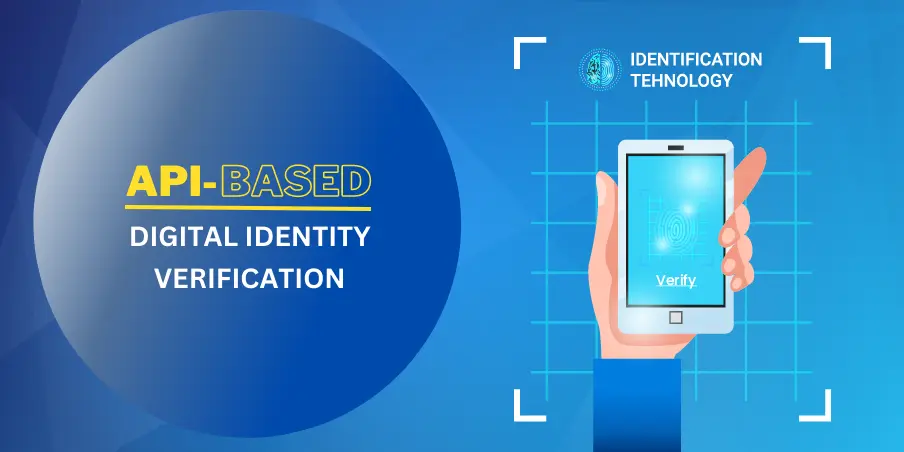BLOGS
19 May 2023
Importance of Identity and Access Management in Today’s Digital Landscape

In today’s digital age, identity and access management (IAM) has become an essential part of business operations. With increasing cybersecurity threats and regulations, businesses need to ensure that their sensitive data is secure and only accessible to authorized personnel. In this blog, we will provide a comprehensive guide to understanding IAM and how it can benefit your business.
What is Identity and Access Management?
Identity and Access Management (IAM) refers to the policies, technologies, and processes used by businesses to manage and secure access to their sensitive data and resources. It involves the authentication, authorization, and management of digital identity verification solutions, ensuring that only authorized personnel have access to specific resources.
IAM is critical in controlling access to sensitive data, ensuring that only the right people can access it, and reducing the risk of data breaches. It involves the use of various tools and techniques, including multi-factor authentication, password management, and biometric identification, to authenticate users and control access to resources.
Why is Identity and Access Management Important for Businesses?
IAM is crucial for businesses for several reasons. Firstly, it helps to protect sensitive data and prevent data breaches. With the increasing number of data breaches, businesses need to ensure that their data is secure, and IAM provides a robust security framework for this purpose.
Secondly, IAM helps businesses to comply with regulations and standards such as the General Data Protection Regulation (GDPR) and the Payment Card Industry Data Security Standard (PCI DSS). Compliance with these regulations is essential for businesses to avoid fines and reputational damage. For example, the healthcare industry is required to comply with HIPAA regulations, which mandate the protection of patient data.
Thirdly, IAM enhances productivity and efficiency by simplifying access management processes. It enables businesses to automate user provisioning and de-provisioning, reducing the burden on IT staff and ensuring that employees have access to the resources they need to do their jobs.
How Does Identity and Access Management Work?
IAM systems use a variety of technologies and techniques to manage user identities and access. Some common components of an IAM system include:
Authentication: This involves verifying the identity of a user, typically using a password or other credentials.
Authorization: This determines what resources a user is allowed to access, based on their role within the organization.
Single Sign-On (SSO): This allows users to access multiple resources with a single set of credentials, simplifying the login process and improving security.
Multi-Factor Authentication (MFA): This involves using multiple forms of authentication (such as a password and a fingerprint scan) to verify a user’s identity, making it more difficult for unauthorized users to gain access.
Provisioning and deprovisioning: This refers to the process of creating and removing user accounts, as well as managing their access to resources over time.
IAM systems can be implemented on-premises or in the cloud, depending on the organization’s needs and preferences.
Best Practices for Identity and Access Management
Effective IAM requires businesses to follow best practices that ensure the security of their data and resources. The following are some best practices for IAM:
Implement multi-factor authentication: Multi-factor authentication involves using two or more authentication methods, such as a password and a biometric factor, to verify user identity. This provides an additional layer of security and reduces the risk of unauthorized access.
Regularly review access policies and procedures: Access policies and procedures should be reviewed regularly to ensure that they are up-to-date and effective. This helps to prevent unauthorized access and reduce the risk of data breaches.
Implement user training and awareness programs: User training and awareness programs can help to prevent phishing attacks and ensure that employees understand the importance of following access policies and procedures.
RPACPC’s Identity and Access Management API Solutions
At RPACPC, we offer a range of IAM solutions to help organizations to manage user identities and access rights. Our API solutions provide a flexible and scalable approach to IAM. Allowing organizations to customize their IAM solutions to meet their specific needs. Whether you need to verify the identity of customers accessing your online services. Or you need to manage access to sensitive internal systems, our IAM solutions can help. Our solutions are built on a secure, cloud-based architecture, ensuring that your data is protected and always available.
At RPACPC, we understand the importance of IAM in today’s digital landscape. With our API solutions, we can help organizations to implement robust IAM solutions that improve security. Streamline access, and support regulatory compliance. Whether you are a small business or a large enterprise. Our IAM solutions can help to protect your sensitive information and ensure that only authorized users are accessing your systems.
Conclusion:
In today’s digital landscape, identity and access management is more important than ever. Organizations must take proactive steps to protect sensitive information and ensure that only authorized users can access it. RPACPC’s IAM API solutions provide a powerful and flexible way to manage user identities and access. Making it easy to maintain a strong security posture while improving efficiency and serving the intended purpose.
